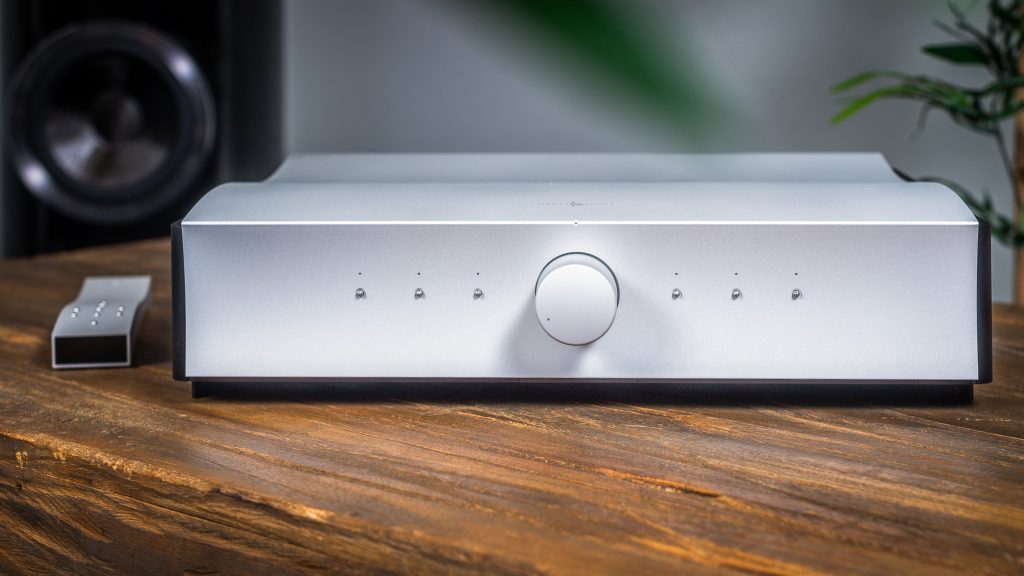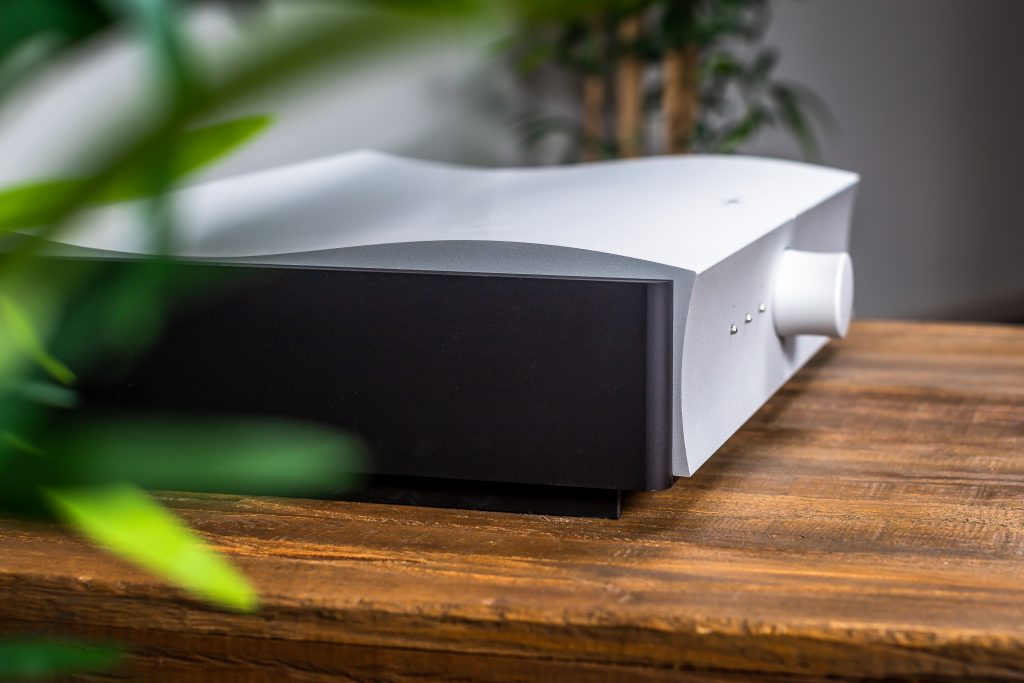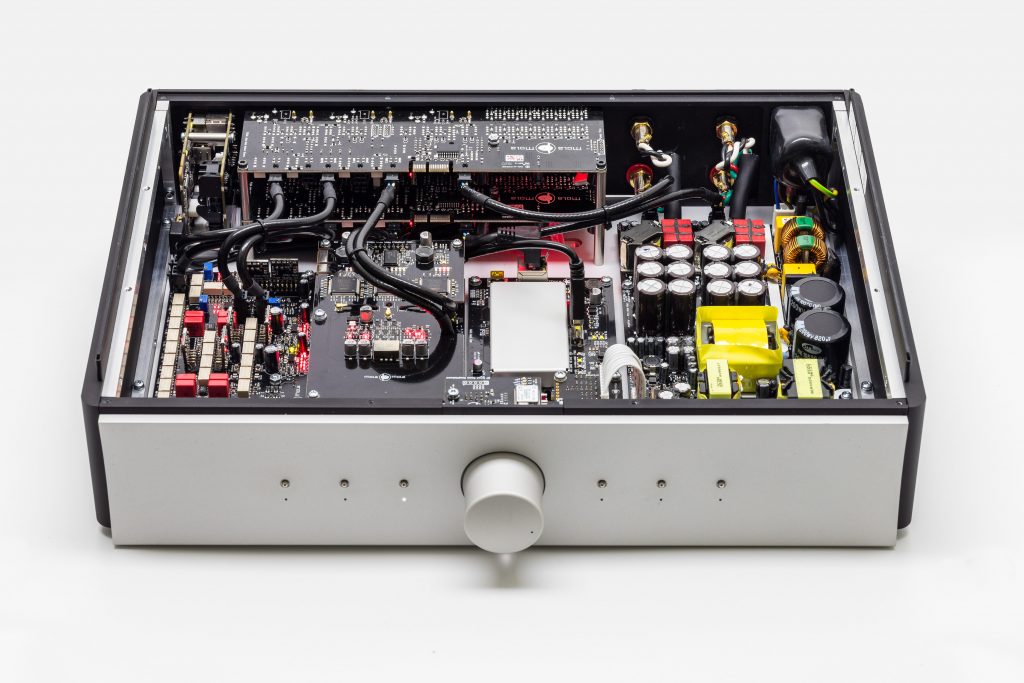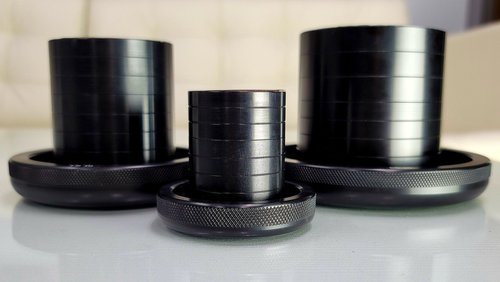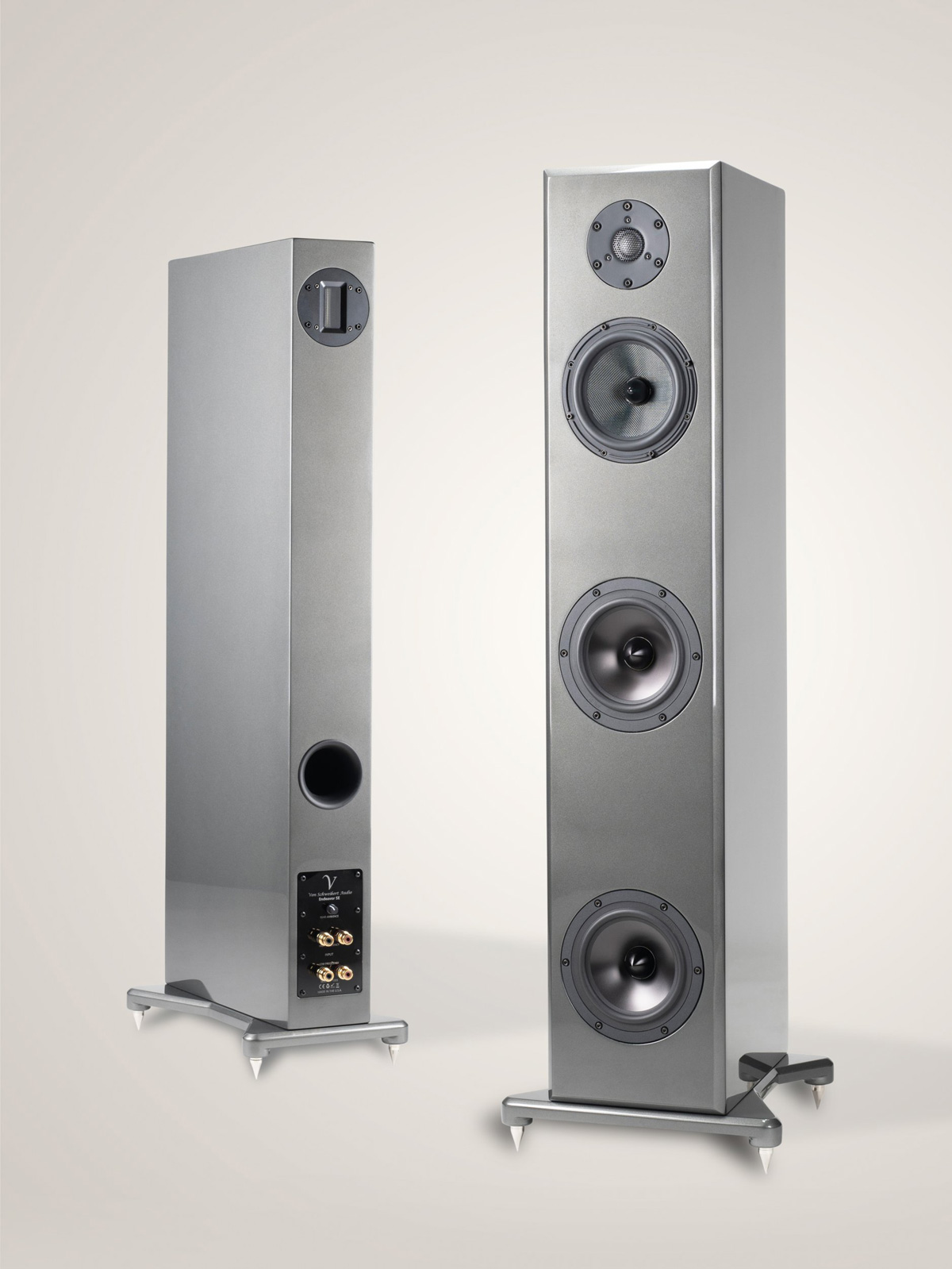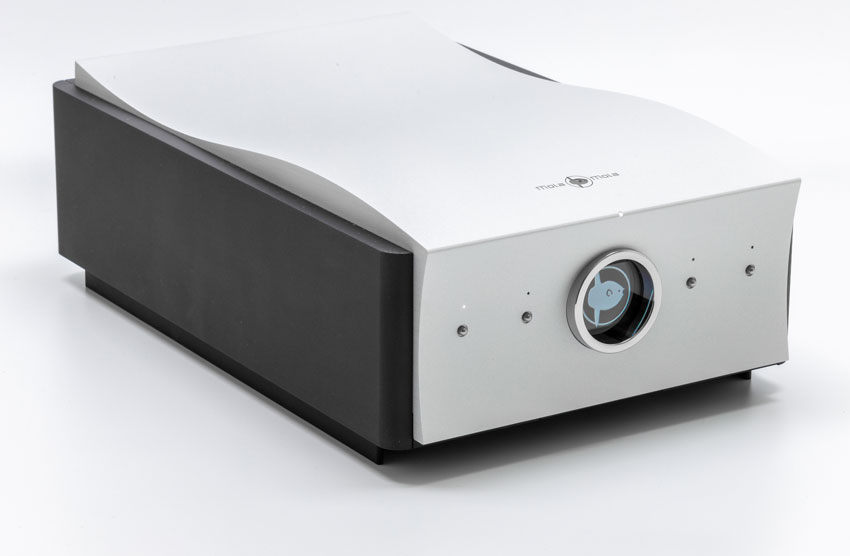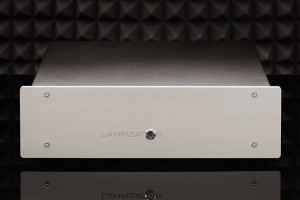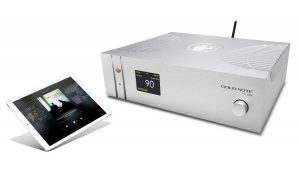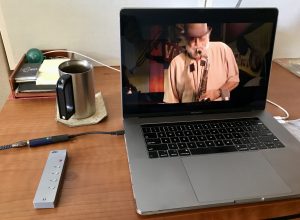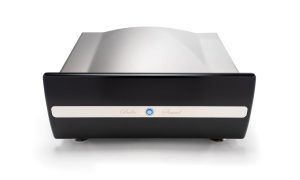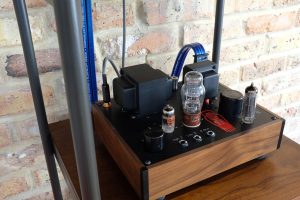All Creatures Great and Small
As a mid-50s baby boomer, I face the daunting but simultaneously liberating task of deciding which of my possessions to keep and which to jettison. For most of my adult life, I have chosen smaller, carefully curated living spaces over "mcmansions," a preference more and more Americans have embraced, young and old.
This "less is more" outlook, while praiseworthy on paper, presents obvious challenges for audiophiles and music lovers who face constant bombardment with the idea that only massive solid state mono block amplifiers driving refrigerator-sized loudspeakers can deliver genuine high-end sound. Dutch audio standout Mola Mola's surprising, and surprisingly compact, Kula integrated amplifier—$13,800 for the basic integrated amp; $25,000 when outfitted with the onboard DAC ($8200) and phono modules ($3000)—gives truth to the lie that bigger necessarily means better. The little Kula, tipping the scales at a scant 25 pounds or so, packs so much genuine high-end performance into its svelte frame, many will question the continued relevance of microwave oven-sized amps and the coffin-scaled speakers that these iron behemoths typically drive.
Based on the same chassis as the celebrated Makua preamplifier (reviewed HERE), the review sample arrived chez moi in a sturdy foam-lined flight case, the amp accompanied by a comprehensive instruction manual explaining setup details and core control parameters. The now universal flat silver remote that Mola Mola, Apple, and a host of other manufacturers provide adjusts volume levels and input choices, but one must use the downloadable app to control the more involved DAC and phono stage switching and playback options.
The amp looks and feels identical to the similarly priced Makua preamplifier but lacks the full suite of analog inputs provided with the pre (3 for the Kula versus 5 for the Makua). Unusually for a modern integrated amp, the Kula boasts no analog outputs, a concession that importer Bill Parish of GTT Audio & Video fame describes as a performance-maximizing necessity. The Kula functions as an integrated amplifier exclusively. Its gracefully sculpted, bead-blasted aluminum chassis and decorative black side-panels tease the eye and delight when touched. Even to the uninitiated it should be clear that this is not your typical high-end component.
Inside, it is perhaps easiest to think of the Kula as a fully tricked-out Makua preamplifier with an important bonus: an improved Class D nCore amplifier said to sound that little bit sweeter even than the firm's celebrated Kuluga mono amplifiers (albeit, with considerably less power at 150 watts into 8 ohms versus the Kaluga's stupefying 400-watt per channel rating into the same load).
I won't rehash all the tricks that Mola Mola has stuffed (albeit with extraordinary grace and skill) into the Kula's petite chassis (about which more see HERE) other than to note that the DAC supports PCM to 384kHz/32-bit, and up to "Quad" DSD (DSD256). The two-board converter upsamples all incoming digital audio to 3.125MHz/32-bits and then converts same to noise-shaped PWM. The DAC boasts a breathtaking 130dB SNR. With the DAC module and network module installed the Kula functions as a ROON endpoint. Software updates are made via USB and Bluetooth depending on the type of update downloaded. Usefully, the Kula accepts AES/EBU, USB, and optical digital inputs. Bill Parish revealed that the onboard DAC is, in most key respects, the same as the pricier Tambaqui converter, minus the stand-alone unit's dedicated analog outputs, power supply, and elaborate casework.
As with the Makua preamp, Mola Mola offers a high-quality onboard phono card as an upgrade option for the Kula. My review sample included both the DAC and phono board options. As I noted in my review of the Makua/Kaluga combo, the preamp's onboard phono stage competes with stand-alone units that cost $4-5K, IMHO. Through the dedicated app (which I ran on my iPad), the Kula, like the Makua preamp, permits users to preset each analog input as an independent phono stage of near infinite configurability. The phono stage features up to 72 different equalization curves. The loading and equalization options are configured in the digital realm, while the chosen equalization curve is applied in the analogue domain, an arrangement that preserves low-level signal integrity and sonic fidelity.
The Sound of Air
Out of box, and after an hour of warm-up time, the Kula impressed with stunning transparency, commendable focus, and open and airy sound staging. Its overall sonic footprint clearly mirrored the giant steps imposed by the standout Mola Mola separates I had the pleasure to live with for a year and a half. This meant impressive bass weight along with stellar pitch delineation, holographic sound staging, and laser-sharp transient fidelity. But the little Kula adds something more to the mix that I found addictive.
For starters, the Kula sounds more like a great tube amp in the upper octaves than the separates. On well-recorded selections the integrated simply captures more of the upper octave air, shimmer, and action that I find so compelling with tubes, and which far too few solid-state amps get right. Stream over Qobuz a great recording like Joni Mitchell's stunning reinterpretation of her classic "A Case of You," Joni Mitchell: Both Sides Now, and the Kula rewards with swirling halos of light and air. Joni's voice, now deeper and raspier, conveys the pathos and regret that accompanies maturity far more effectively than her younger self. But, the breathless articulation, the subtle hesitancy, and the elegant phrasing of her youth remain, the Kula precisely recreating the weight and texture of her "back-of-throat/upper chest" aspiration when she declares in doubt-filled exhaustion "I am as constant as a northern star, And I said…"
Switching to percussionist/composer Joël Grare's eastern-scented "Nihavent," from his stellar 2008 outing Paris-Istanbul-Shanghai, only intensifies the effect, the recorded ambient field effectively permeating into the room like an airy, billowing cloud of sound totally unburdened by the sidewalls, floor, and ceiling of my compact living room.
The Kula also sounds a tad more resolute tonally. A recent find (on Qobuz again), the soundtrack to the stellar 2015 Bryan Cranston film Trumbo, spotlights these sonic improvements. On the opening cut, "Eighty Words a Minute," Trumbo: Original Motion Picture Soundtrack, composer Theordore Shapiro creates a montage of swirling jazz-suffused color, texture, and rhythmic punch, simulating Trumbo pounding away on the keys of his typewriter and imbuing the film with a neo-noir sense of narrative urgency. Every instrument or instrumental cluster in the mix, from the muted trumpets to the plucked strings of the acoustic bass, to the massed accompanying strings, to the rhythmically charged piano sounds like it does in real life. Instrumental textures and timbre standout that little bit more with the new amp circuit in play, making it easier to listen into great recordings and to imagine that we are hearing actual musicians in the room, not electronically reconstructed simulacrums.
Lastly, the Kula boasts superior micro-dynamic expressiveness. Little details bloom like nobody's business, the music sounding impressively lithe, athletic, and rhythmically supple as a result. Fans of world music auteur Kip Hanrahan's pathbreaking American Clave recordings from the 80s and 90s will love what the Kula does with their favorite KH tracks. Playing a personal treasure from Hanrahan's pop-scented 1985 release Vertical's Currency, "Two Heartedly – To the Other Side," I sat enraptured at the intricate musical interplay between Arto Lindsay's delicate guitar work, Milton Cardona's fluid "behind and in front of the beat" bongo and conga lines, Steve Swallow's jazzy bass support, and Scottish rock legend Jack Bruce's breathlessly hesitant vocals. Talk about goose bumps!
Parting Gifts
Does the Kula offer musical perfection in a box that boasts dimensions not much larger than an early generation laptop computer? Sonically it yields perhaps a touch of rare-earthed tonal refinement to the pricier competition, as well as a bit of overall slam and bass power. But when you add to the mix a world-class DAC and "almost as good" phono stage, you come up with something quite special: a downsized single-box solution to all your audio component woes. Be warned, what the Kula offers ain't cheap. But for the well-heeled mélomane downsizing his/her audio possessions to sensible proportions, the Kula offers a compelling mix of dizzying flexibility, gorgeous sound, and superb user-friendliness.
Very highly recommended!
Mola Mola Kula Integrated Amplifier with onboard DAC and Phono Stage
Retail: Amplifier - $13,800; Phono stage - $3000; DAC - $8200
Mola Mola
U.S. Distributor
GTT Audio and Video
356 Naughright Rd.
Long Valley, NJ, 07853
USA
908.850.3092
All Images courtesy of Mola Mola




